








But don’t just take our word for it. Data Facts has made HRO Today’s Customer Satisfaction Ratings list for the past 7 years in a row. This is a nationwide award directly driven by our happy customer’s positive feedback. While we’re proud of placing in the Top 10 in 2024, we are even prouder of the di erence we get to make to our clients every day. Faster turnaround times, more accurate data, and compliant, streamlined processes - it’s all part of the Data Facts Di erence.



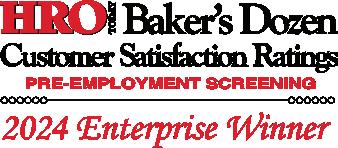



Get access to your pay when you want it.




26% of U.S. workers say they will likely leave their job in the new year because of incivility.



Editor Cynthia Y. Thompson, MBA, SHRM-SCP, SPHR
Publisher The Thompson HR Firm, LLC
Art Direction Park Avenue Design
Marketing and Social Media Specialist
Julie Nagem
Project Specialist
Liz Rogers
Photographer
Charles B. Thompson
Webmaster
Leo Dimilo
Contributing Writers
William Brown
Jessi Bullock
Amy Schabacker Dufrane
Tim K. Garrett
Tim Keck
Geoffrey A. Lindley
Nick Pearce
Nakota G. Wood
Hunter Yoches
Edward Zaval
Contact HR Professionals Magazine:
To submit a letter to the editor, suggest an idea for an article, notify us of a special event, promotion, announcement, new product or service, or obtain information on becoming a contributor, visit our website at www.hrprofessionalsmagazine.com. We do not accept unsolicited manuscripts or articles. All manuscripts and photos must be submitted by email to Cynthia@hrprosmagazine.com. Editorial content does not necessarily reflect the opinions of the publisher, nor can the publisher be held responsible for errors.
HR Professionals Magazine is published every month, 12 times a year by the Thompson HR Firm, LLC. Reproduction of any photographs, articles, artwork or copy prepared by the magazine or the contributors is strictly prohibited without prior written permission of the Publisher.
All information is deemed to be reliable, but not guaranteed to be accurate, and subject to change without notice. HR Professionals Magazine, its contributors or advertisers within are not responsible for misinformation, misprints, omissions or typographical errors.
©2025 The Thompson HR Firm, LLC This publication is pledged to the spirit and letter of Equal Opportunity Law. The following is general educational information only. It is not legal advice. You need to consult with legal counsel regarding all employment law matters. This information is subject to change without notice. www.HRProfessionalsMagazine.com
5 note from the editor 6 Profile – Johnny C. Taylor, Jr., CEO of
Highlights from the SHRM-Memphis
Appoints Lisa Morelli as Director of Field Management Programs
Linkage , Inc., a SHRM Company, Appoints Tamla Oates-Forney as CEO
Health FSA Limit Increases for
2025 Limits to Know
Set Your Self-Funded Health Plan Up for Success in 2025
Is Employee Engagement and Communications a Challenge?
The Rising Tide of Healthcare Costs: A Strategic Approach for Employers with FEDlogic
Is Employee Engagement and Communications a Challenge?
2025 GMEBC Board of Directors
Are Your Mandatory Labor Law Posters Up-to-Date?
An Industry Pioneer & Trusted Partner in Background Screening for Over Three Decades
Get Access to Your Pay When You
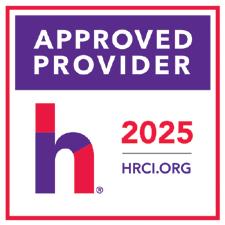


Welcome to 2025! Can you believe it? It was great meeting you and covering the SHRM conferences in the Southeast during 2024! We also loved covering the annual SHRM Conference in Chicago. It’s time to start planning which SHRM conferences you want to attend in 2025, so that you can include them in your HR budget. Make plans now to attend SHRM25 in San Diego! It’s a fabulous city to visit. Get your tickets early! We can’t wait! (SHRM.org/SHRM25-hrprosjan)
We are SO excited to have SHRM President and CEO, Johnny C. Taylor, Jr., on our January cover. It is the perfect way to kick off 2025! We have planned more exciting covers in the coming year that feature the movers and shakers in the HR community in the Southeast who have made a difference in our industry.


If you are looking for credits for your SHRM recertification and HRCI recertification, we’ve got you covered. Stay tuned for the details of our upcoming webinars on Tuesdays and Thursdays. Special thanks to Data Facts who sponsors my monthly complimentary webinars. Our next webinar is January 24 at 10 AM CT/11 AM ET. Watch your email for your invitation. Please mark your calendars and plan to join us.

Best wishes for a happy, healthy, and prosperous 2025!


cynthia@hrprosmagazine.com
Connect with me on LinkedIn:https://www.linkedin.com/ in/cynthia-thompson-mba-shrm-scp-sphr-325b8715/ Like us on Facebook.com/HRProfessionalsMagazine

See you in San Diego for SHRM25 in San Diego June29-July 2!



Mr. Taylor’s career spans more than 20 years as a lawyer, human resources executive, and CEO in both the not-for-profit and for-profit spaces. He has held senior and chief executive roles at IAC/InteractiveCorp, Viacom’s Paramount Pictures, Blockbuster Entertainment Group, the McGuireWoods law firm, and Compass Group USA.
Most recently, Mr. Taylor was President and Chief Executive Officer of the Thurgood Marshall College Fund.
Johnny C. Taylor, Jr., SHRM-SCP, is President and Chief Executive Officer of SHRM. With nearly 340,000 members in 180 countries, SHRM impacts the lives of more than 362 million workers and their families globally.
As a global leader on the future of employment, culture, and leadership, Mr. Taylor is a sought-after voice on all matters affecting work, workers, and the workplace. Recognized as one of the “300 Most Influential Executives in Corporate America” for 2024 by Savoy Magazine and one of the “Most Influential People Shaping Public Policy” in our nation’s capital by Washingtonian Magazine, Mr. Taylor is frequently asked to testify before Congress on critical workforce issues and authors the weekly USA Today column, “Ask HR.”
He is the author of the national bestseller, RESET: A Leader’s Guide to Work in an Age of Upheaval, which immediately upon its release in September 2021, was in the top three of The Wall Street Journal’s list of best-selling hardcover business books.
Mr. Taylor is a member of the United Way Worldwide Board of Trustees and serves on the corporate boards of XPO Logistics (NYSE: XPO), Flores & Associates, and Guild Education. He previously served on the White House American Workforce Policy Advisory Board and as chairman of the President’s Advisory Board on Historically Black Colleges and Universities during the Trump Administration.
The Women Business Collaborative (WBC) named Mr. Taylor as one of its 2023 Trailblazers in Gender Equity and Diversity for his work to achieve equal position, pay, and power for all women in business.
In 2020, he received the Distinguished Executive of the Year Award from the Academy of Management, and he was named 2021 ALA Professional Society CEO of the Year by CEO Update.
He is a Fellow of the National Academy of Human Resources and is licensed to practice law in Florida, Illinois, and Washington, D.C.



Over 90% of HR professionals say that skills-first strategies are valuable for employee development, yet candidates with a degree are still twice as likely to be deemed “highly qualified” as those without.*
SHRM Talent 2025 is the perfect opportunity to bridge the gap between agreement and action on skills-first talent development. Join us to hear from industry experts and take back to your organization the knowledge, technology, and support necessary to more e ectively evaluate a person’s ability to thrive in a job.
*Source: SHRM Foundation, Making the Case for Skills-First Hiring, 2023.





ALABAMA
May 12-14 in Orange Beach
August 28-31 in Lexington
October 8-10 in Rogers

August 24-27 in Orlando

GEORGIA
October 8-10 at Atlanta Evergreen Resort

April 10-11 in Baton Rouge

September 24-26 in Greensboro
September 24-26 in Myrtle Beach

September 7-10 in Nashville

September 8-10 in Biloxi

TEXAS GLOBAL CONFERENCE
September 18


















Betty Thompson, SHRM-SCP Chair
SHRM Board of Directors

Sean N. Woodroffe, SHRM-SCP Director-at-Large
Executive Vice President, Chief People, Culture and Communications Officer, Lincoln Financial Group

Melissa Anderson, SHRM-CP Immediate Past Chair
Senior Vice President, Human Resources, Albemarle Corporation
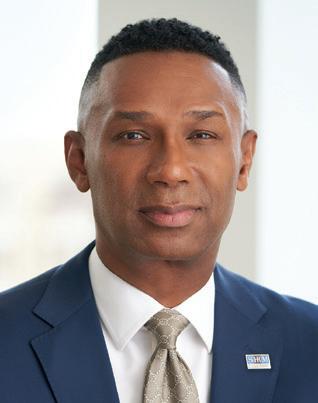
Johnny C. Taylor, Jr. SHRM-SCP
President & CEO, SHRM
Valerie Vargas Director-at-Large
Senior Vice President, AT&T Advertising and Retail Marketing

Nilanjan Adhya Director-at-Large
Chief Digital Officer BlackRock

Susana Suarez Gonzalez, Ph.D., SHRM-CP Director-at-Large
Executive Vice President, Chief Human Resources and Diversity, Equity & Inclusion Officer, Amcor

Mandy Woulfe, SHRM-SCP Director-at-Large
Vice President of Human Resources, Adelante Development Center, Inc.
James Clark Director-at-Large
President and CEO, Boys & Girls Clubs of America
Michael D'Ambrose, SHRM-SCP Director-at-Large
Global Business Strategist & Board Director

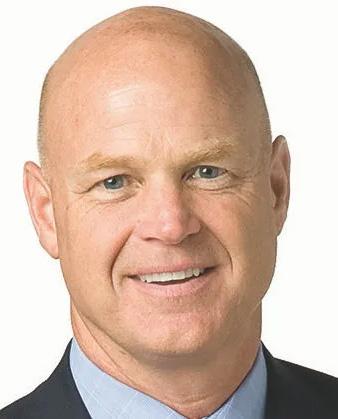
Paula Harvey, SHRM-SCP Director-at-Large
Vice President of Human Resources and Safety Schulte Building Systems, Inc.

Scott Snell, Ph.D. Director-at-Large
Frank Sands, Sr., Chair in Business Administration, Darden Graduate School of Business, University of Virginia
William Phelan Director-at-Large
Senior Finance Executive


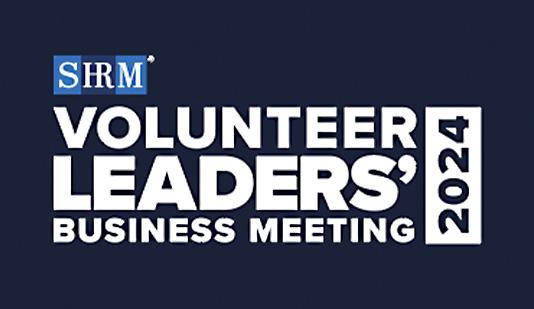
The Pinnacles were awarded Nov. 22 during the SHRM Volunteer Leaders’ Business Meeting (VBLM) in Washington, D.C. They were presented in three categories—Serving the Professional, Advancing the HR Profession, and Enhancing the SHRM Community—and by chapter size. State Councils in each of the three categories also received awards.
Birmingham SHRM in Alabama was recognized with SHRM’s Workplace Impact Award for its work with untapped talent through its Second Chance Hiring Fair. The chapter expanded its services from resume development and interview preparation during the fair to providing hands-on support during the event and using analytical data to strengthen this and other programs seeking to overcome employment re-entry barriers.
Small Chapter-Four Rivers SHRM (Kentucky)
“Expanding Access for Students and Emerging Professionals”
The chapter learned that cost and the opportunity to participate were the main barriers to potential membership among students and emerging HR professionals. The chapter removed all fees for students and interns, reducing its annual fees by 20%, and implementing a tiered pricing structure for organizations that sponsor multiple memberships.
The chapter’s partnerships with a local college and university were strengthened. The chapter gained 39 new members and seven former members rejoined; it also saw 15 organizations utilize the tiered pricing structure. Membership numbers surpassed pre-pandemic levels due to the changes made to engage those early in their HR careers.

State Council-Texas SHRM State Council
“LEADHRS”
The leadership program was piloted in 2020 with 20 chapter leaders. It has grown to 45 graduates over three years, and they have collectively earned hundreds of certifications in the process. Additionally, this next generation of HR leaders dedicated more than 40,000 hours to their professional growth and created a powerful network of HR professionals.
Small Chapter-Jefferson County Human Resources Management Association (Wisconsin)
“Employer Toolkit: Activating a Newcomer Workforce”
The event was Wisconsin’s first-ever conference dedicated to hiring international workers and aimed at a specific professional audience. The day long event was tailored for HR professionals, hiring managers, staffing services, and business owners. It addressed critical regional challenges: low unemployment, an aging population, and declining birth rates. A benefit to the chapter: Among 84 attendees, it welcomed 43 new chapter members-a 44% increase in membership.
Medium/Large Chapter-SHAM Montgomery (Alabama)
“Empowering Excellence: Celebrating Women in Industry Lunch and Learn Series”
Held during Women’s History Month in March, this series celebrated trailblazing women in HR who have achieved the pinnacle of their careers. Each week, a distinguished leader shared her journey, offering insights into balancing career, life, and motherhood. All sessions were recorded and shared on the chapter’s YouTube channel, making the content accessible to members and nonmembers. The event also drew new people to the chapter, and SHRM Montgomery’s social media engagement surged.
State Council-Southwest Central Regional Council (Arkansas, Louisiana, Missouri, and Texas)
“Cause the Effect” Membership Initiative
Now in its second year, the Southwest Central Regional Council’s membership initiative has:
• Established a platform for “just-in-time” communication, utilizing a message board, chat feature, documents library, and resource library.
• Held quarterly virtual calls that provided intimate and safe dialogue of successes and challenges in leading the membership initiative in individual states. During each session, a particular state was spotlighted to share an initiative. Meetings are recorded for reference.
• Provided opportunities to connect in person at SHRM Volunteer Leader events.
• Seen regional membership grew in every single state in the region-eight chapters and two State Councilsduring the first year.
As the United States prepares for the presidential administration change, the anticipation of shifts in policies and regulations is palpable. These transitions often create significant adjustments to workplace rules, labor laws, and hiring practices that directly impact hiring strategies.
HR professionals must stay informed to be ready for these potential changes. Read on as we examine the hiring areas that will most likely experience changes after inauguration day.
A new administration almost always makes a few changes to employment policies. Some are minor modifications, while others can be complete transformations. In the current scenario, we have a unique insight into what’s on the horizon, since we can pull from the previous Trump administration’s stance.
HR professionals will need to adapt to a list of changes in the upcoming 12-24 months. Let’s dig into the trends and developments employers should be ready for after the inauguration.
Wage and hourly policies, tipping policies, and changes to the minimum wage for federal employees.
What we may see:
Federal income taxes on tips could be eliminated if Trump makes good on his election campaign promise. He also frequently mentioned making overtime wages tax-free. The incoming administration may also try to make it easier to classify independent contractors, simplifying employer compliance with wage and hour policies.
The Trump administration will also most likely return to the 2021 Fair Labor Standards Act (FLSA) joint employer rule. This sets a higher bar for a joint employer finding, requiring companies to exercise actual control over hiring and termination, supervision and scheduling, maintenance of employment records, or setting of pay rates to be deemed a joint employer. (source)
What we may see: President Biden’s diversity, equity, and inclusion (DEI) initiatives may be reformed, revised, and limited.
“We saw during the [first] Trump administration an executive order that sought to ban or limit certain concepts in diversity and inclusion trainings. […] That was repealed by the Biden
administration. That executive order was subject to challenge in court,” said Jim Paretti, former senior counsel to the acting chair of the U.S. Equal Employment Opportunity Commission. (source)
Under Trump, the Equal Employment Opportunity Commission (EEOC) may adopt a more conservative approach to enforcing civil rights laws. This could mean:
• Focusing less on systemic investigations and more on individual claims.
• Scaling back hardcore enforcement of workplace discrimination laws.
• Limiting broad interpretations of Title VII of the Civil Rights Act.
Immigration Policies
What we may see: Tightening H-1B visa restrictions, expanding e-Verify, and increasing workplace audits and penalties.
One of Trump’s biggest campaign platforms centered around stemming illegal immigrants from crossing the border. Organizations are sure to feel this focus in several ways.
• Starting almost immediately, there will most likely be an increase in workplace audits looking for unauthorized employees. (During Trump’s first administration, there were 12,000 audits compared to Biden’s 400 audits.)
• Currently, e-Verify isn’t required of every organization in every city and state. Prepare for the electronic employment verification software to be mandated in a wider variety of places and across more industries.
• Homeland Security Investigations (HSI) will start closely monitoring thirdparty vendor I-9 systems to ensure their audit trails are accurate and complete.
What we may see: The next four years will be crucial to how artificial intelligence (AI) evolves.
• It’s likely the new administration will appeal Biden’s AI Executive Order that heavily regulated AI.
• Expect more hands-off AI regulation than the previous administration was pursuing.
• However, Trump will most likely strengthen AI export restrictions by tightening control rules.
“I think whatever replaces (the Biden order, the AI Bill of Rights that was introduced by executive order in October
2022), if anything does, will probably be less regulation heavy,” said John Villasenor, faculty co-director of the UCLA Institute for Technology, Law and Policy. (source)
What Should HR Do to Be Ready for
The answer is one HR has heard many times. Get ready to implement new ways of doing things.
HR leaders must prepare for an incoming administration that will immediately alter the current regulations and requirements. Taking proactive steps now will help you stay compliant and maintain workforce stability.
• Stay informed on policy updates Monitor changes to labor and discrimination laws as they unfold. Being proactive in understanding new rules allows HR teams to adapt policies and practices in real time.
• Re-evaluate DEI strategies. Review your DEI programs to ensure compliance with any restrictions or updated training requirements while preserving inclusivity. This can help mitigate risks.
• Conduct compliance audits Assess hiring, classification, and compensation practices to ensure alignment with anticipated changes in wage laws or worker classifications.
• Choose reputable vendors. Partner with trusted vendors for services like background checks, payroll, and compliance tools. Reputable vendors stay updated on regulatory changes, providing HR teams with reliable resources to maintain compliance and streamline operations.
• Engage legal counsel. Collaborate with labor law experts to anticipate and navigate potential regulatory changes, ensuring all HR actions are legally sound. Legal professionals can provide insights into complex policy shifts, help HR teams interpret new rules, and avoid compliance pitfalls. Proactive legal guidance also maximizes the chances your workplace policies are updated promptly.
While we may not know the exact specifics, the presidential transition will bring change. HR leaders and business decision-makers must brace for shifts that impact hiring practices, labor laws, and compliance.
Staying informed and adaptable is essential for managing the presidential handoff. Proactive planning and committing to compliance enable your business to thrive.
Data Facts | www.datafacts.com
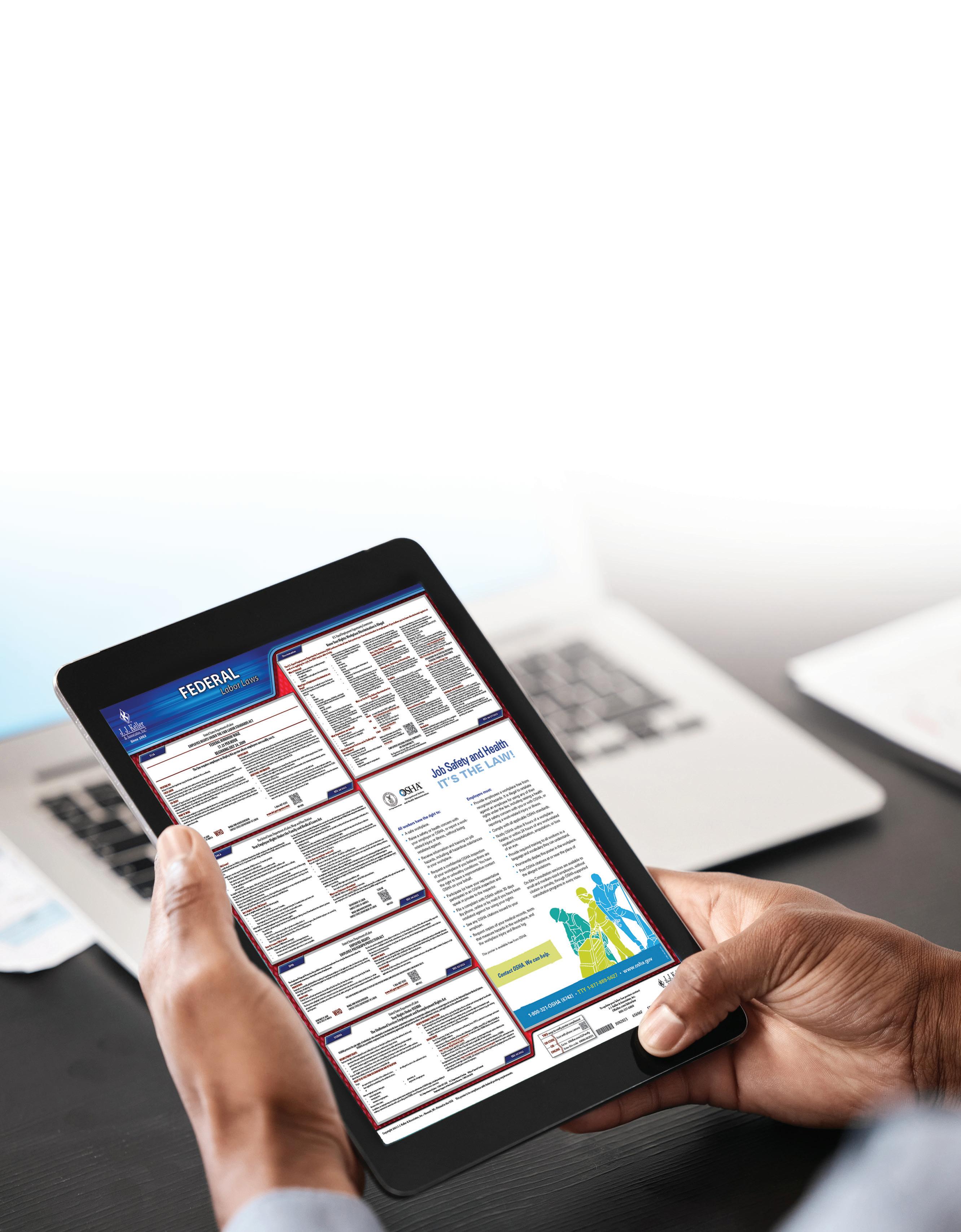
From talent acquisition to retaining valuable employees, how you describe, evaluate, and pay for work is key to your company’s success. JobBldr™ helps you create, store, and manage job descriptions that work for HR, compensation management, and pay structures.
Automatically create Job Descriptions with easy-to-use tools aligned with best practices.
Collaborate with managers & collaborators to get buy-in.
Access 11K+ predefined Job Description templates.
Use side-by-side views to analyze comparable jobs.
Unlimited versioning, with point-in-time archiving.

FEBRUARY 20, 2025 | 10:00–11:00 am CT
Join HR Professionals and Trainery One to learn how JobBldr™ brings structure and efficiency to creating, building, and managing job descriptions. You’ll learn how to:
• Create job description templates with editable drag-and-drop content blocks.
• Optimize, track & manage work in progress.
• Effectively integrate AI into job descriptions & processes.
• Increase organizational efficiency & break down silos with TraineryCORE technology.
SPONSORED BY

HOST & MC
Cynthia Y. Thompson , MBA, SCP, SPHR Editor | Publisher PRESENTER Mahesh Kumar, Managing Director Trainery One
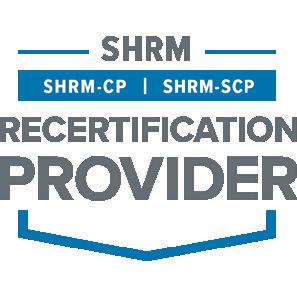


This program has been granted 1 hour of SHRM recertification credit. HR Professionals Magazine is recognized by SHRM to offer Professional Development Credits (PDCs) for SHRM-CP® and SHRM-SCp® recertification activities.
This program has been pre-approved for one credit hour toward aPHR®, aPHRi™, PHR®, PHRca®, SPHR®, GPHR®, PHRI™ and SPHR1™ recertification through HR Certification Institute® (HRCI).
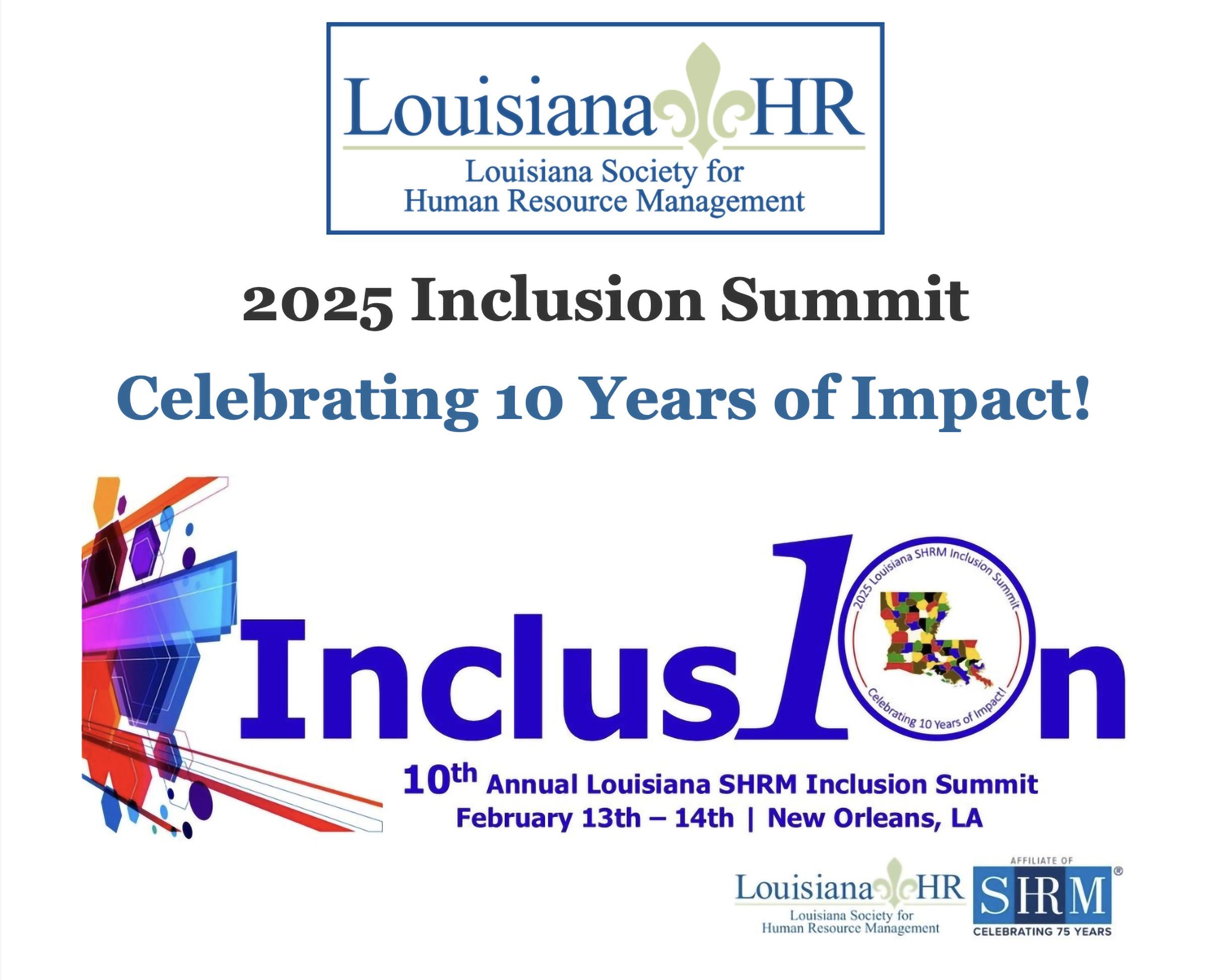


By EDWARD ZAVAL
Even though the economists tell us inflation is cooling, American workers are still navigating a challenging economy. The cost of living— housing, healthcare, and food—has skyrocketed. While millions of Americans are living paycheck to paycheck, with one in four without any emergency savings at all, the danger of falling into the seemingly never-ending cycle of debt is a frightening and realistic proposition. For many of them, one unexpected expense—whether it’s a medical bill, car repair, or an unusually high utility bill—can throw their finances a few steps behind.
A poll from Fidelity reveals that nearly two-thirds (65%) are considering a financial resolution for the year ahead. For HR Professionals, this is an opportunity to help make those resolutions come true. HR Professionals can seize the moment of a new offer financial wellness benefits that can make an immediate positive impact on their lives. Benefits that speak to their resolution often entail living a more responsible financial life.
And that’s where earned wage access comes into play.
Employer-sponsored earned wage access is a financial wellness benefit that allows employees to access their earned but unpaid wages before their regular payday. This voluntary program empowers workers to take greater control over their finances.
One concern an HR professional might have is the danger of an employee potentially misusing the benefit. However, the numbers show the opposite. For example, usage data from DailyPay shows that the top 3 reasons employees use their service are to pay bills, buy groceries, and buy gas.
Responsible usage is critical to ensuring that earned wage access benefits employees in the long term.Research shows EWA users can avoid high-interest credit cards, predatory loans, and overdraft fees by using the financial wellness benefit, setting themselves up for financial success and stability. As a proof point relating to responsible usage, DailyPay actually sees employee usage drop off over time because they begin to build a safety net for themselves as they break out of a debt cycle. Earned wage access emerges as a valuable tool that employees leverage on their path to financial stability.
So what happens when your employees live paycheck to paycheck without a safety net? Financial stress doesn’t stay at home— it comes to work with them. Studies show that workers under financial strain are more likely to experience lower productivity, increased absenteeism, and decreased job satisfaction. When your employees are stressed about how they’ll make it to their next payday, it impacts their focus, engagement, and well-being.
But when HR professionals offer an earned wage access platform - you’re providing more than just a benefit. You’re helping to alleviate that financial stress, giving your employees the flexibility they need to navigate their financial lives. In turn, they’re more focused, more engaged, and more satisfied in their roles. And that’s a resolution we can all support.
Edward Zaval Chief Customer Officer, DailyPay


SHRM Seminars o er in-person and live online programming so you can stay in front of emerging HR trends, expand your expertise and continue to develop personally and professionally.
Learn from industry experts on topics such as:
• Employment Law and Compliance
• Talent Acquisition
Page 19
• Leadership and Strategy
SHRM Seminars
• SHRM Certification Exam Preparation
Pick up the Dec24 Ad Page 19
• AI+HI Integration for Workplace Decisions and Innovation
Please make the following revisions to this ad: Delete “Time is Running Out”
• And more!
Pick up new QR code attached.
Change “Finish the Year Strong” to “Start the Year Strong.”
Change the link at the bottom of the page to:
https://shrm.co/SHRMSeminars25
Reserve your spot today.


S T ART THE YEAR STRONG. F I ND Y O UR PERFECT PROGRAM NO W. https://shrm.co/SHRMSeminars25
Did you know SHRM members save nearly $300 on seminar registration with their membership discount? Also, customized team training programs are available!


On Oct. 22, 2024, the IRS announced the inflation-adjusted limit for 2025 on employee salary reduction contributions to health flexible spending accounts (FSAs). For plan years beginning in 2025, the adjusted dollar limit on employees’ pre-tax contributions to health FSAs increases to $3,300. This is a $100 increase from the 2024 health FSA limit of $3,200.
The Affordable Care Act (ACA) imposes a dollar limit on employees’ salary reduction contributions to health FSAs. This limit started as $2,500 for plan years beginning on or after Jan. 1, 2013, and has been adjusted for inflation for subsequent plan years.
As an exception to the use-or-lose rule, employers with health FSAs may allow employees to carry over a certain amount of funds remaining at the end of a plan year to reimburse eligible expenses incurred in the plan year immediately following. The maximum carryover amount is adjusted annually for inflation. For plan years beginning in 2025, the maximum carryover limit increases to $660 (from $640 for 2024). Employers that allow carryovers may impose their own limit that is lower than the maximum carryover limit.
Employers should ensure that their health FSAs will not allow employees to make pre-tax contributions over $3,300 for the 2025 plan year. Employers can impose a lower limit on employees’ pre-tax contributions to a health FSA. Employers should confirm that their health FSA contribution limit is included in the plan’s documents and communicated to employees as part of the open enrollment process. In addition, employers that allow health FSA carryovers should confirm that the carryover limit does not exceed $660 for the plan year beginning in 2025.
Many benef it plan limits have changed for the new calendar year Here are some limits to review for 2025:
Many benef it plan limits have changed for the new calendar year Here are some limits to review for 2025:
Many benef it plan limits have changed for the new calendar year Here are some limits to review for 2025:
Many benef it plan limits have changed for the new calendar year Here are some limits to review for 2025:
Pre-tax contributions: �23,500 (up �500 from 2024)
Pre-tax contributions: �23,500 (up �500 from 2024)
Pre-tax contributions: �23,500 (up �500 from 2024)
Catch-up contributions: �7,500 (no change from 2024)
Catch-up contributions: �7,500 (no change from 2024)
Catch-up contributions: �7,500 (no change from 2024)
Pre-tax contributions: �23,500 (up �500 from 2024)
Exception: �11,250 for employees ages 60-63
Exception: �11,250 for employees ages 60-63
Exception: �11,250 for employees ages 60-63
HEALT
ACCOUN T (HSA)
LIMI TS
LIMI TS
Catch-up contributions: �7,500 (no change from 2024)
Exception: �11,250 for employees ages 60-63
HIGH DEDUCT IBLE HEALT H PL AN (HDHP) LIMI TS
HIGH DEDUCT IBLE HEALT H PL AN (HDHP) LIMI TS
HDHP minimum deductibles:
HDHP minimum deductibles:
HDHP minimum deductibles:
Single coverage: �1,650 (up �50 from 2024)
Single coverage: �1,650 (up �50 from 2024)
Single coverage: �1,650 (up �50 from 2024)
Family coverage: �3,300 (up �100 from 2024)
Family coverage: �3,300 (up �100 from 2024)
Family coverage: �3,300 (up �100 from 2024)
HDHP maximum out-of-pocket costs:
HDHP maximum out-of-pocket costs:
HDHP maximum out-of-pocket costs:
Pre-tax contributions:
Pre-tax contributions:
Single coverage: �4,300 (up �150 from 2024)
Single coverage: �4,300 (up �150 from 2024)
Pre-tax contributions: Single coverage: �4,300 (up �150 from 2024)
Family coverage: �8,550 (up �250 from 2024)
Family coverage: �8,550 (up �250 from 2024)
Family coverage: �8,550 (up �250 from 2024)
Catch-up contributions: �1,000 (no change from 2024)
Catch-up contributions: �1,000 (no change from 2024)
Catch-up contributions: �1,000 (no change from 2024)
Pre-tax contributions: Single coverage: �4,300 (up �150 from 2024)
Family coverage: �8,550 (up �250 from 2024)
Catch-up contributions: �1,000 (no change from 2024)
Contributions: �3,300 (up �100 from 2024)
Contributions: �3,300 (up �100 from 2024)
Contributions: �3,300 (up �100 from 2024)
Single coverage: �8,300 (up �250 from 2024)
HDHP minimum deductibles:
Single coverage: �8,300 (up �250 from 2024)
Single coverage: �8,300 (up �250 from 2024)
Family coverage: �16,600 (up �500 from 2024)
Family coverage: �16,600 (up �500 from 2024)
Single coverage: �1,650 (up �50 from 2024)
Family coverage: �16,600 (up �500 from 2024)
Family coverage: �3,300 (up �100 from 2024)
HDHP maximum out-of-pocket costs:
Reach out to us for more information on any of these limits.
Reach out to us for more information on any of these limits.
Reach out to us for more information on any of these limits.

verage: �8,300 from 2024)
coverage: (up �500 4)

Contributions: �3,300 (up �100 from 2024)
https://thebenefits.group (615) 250 - 3334
https://thebenefits.group (615) 250 - 3334
https://thebenefits.group (615) 250 - 3334
will@benefits.place
will@benefits.place
By NICK PEARCE

At any company, data is one of the keys to building a successful benefits strategy. But data alone isn’t enough –it’s how you use it that makes the difference. The right data analysis combined with the right benefits broker will put you ahead of the game in 2025. The first quarter of a new plan year is an excellent time to review the outcomes of open enrollment decisions and see how they compare to what you had forecasted for the upcoming year.
Conducting a post-open enrollment analysis is one of the best ways to chart your path, help you analyze your plan’s performance and provide customized recommendations to guide your strategy, track progress, and measure results.
Data analytics will help you identify what’s driving costs in your health plan and allow you to create an action plan to address them. Key trends we’re seeing include utilization management, specialty pharmacy, biosimilars, and the growing number of chronic conditions.
One major trend affecting many employers is the rise in popularity of GLP-1 drugs like Ozempic, Mounjaro, and Wegovy. These drugs have been around for nearly a decade, primarily for diabetes management. But in the last 18 months, they’ve become much more popular for weight loss. Manufacturers are also exploring their use for other conditions like heart disease and dementia.
With these new indications on the horizon, it’s important for your company to have a plan in place. Right now, most of these medications cost over $1,000 per prescription, and employer costs for this drug class have increased by more than 60% in the past year. These drugs now account for about 5% of all medical and pharmacy costs on average. Companies that are lacking access to data often struggle to make informed decisions about covering these drugs. But by analyzing historical information alongside workforce demographics, companies can make decisions that best suit their needs.
Another important area of focus is mental health benefits. Many employers want to understand why some employees may be facing challenges in accessing these resources. Increasing utilization in this area can lead to more productive and fulfilled employees. By analyzing who is using the benefits – and who is not – you can create a strategy to better support those in need. Using your data in the right way can help you answer these questions so you can focus on implementing solutions that will truly make a difference.
Stop guessing whether or not your benefits plan is working. Let your data help you make the right decisions so you can achieve your financial and employee engagement goals. Make your benefits package targeted and meaningful to your workforce!
Nick Pearce, ASA, MAAA, FCA VP, EB Insights & Analytics
Nick.Pearce@McGriff.com
McGriff, a Marsh & McLennan Agency LLC company


The McGriff Journey ® mobile app is the solution.
Deliver 24/7/365 communication about benefits, employee recognition, wellness and more. Let McGriff Journey:
• Serve as a platform for year-round employee communications
• Drive engagement in company-sponsored programs
• Provide education to help employees lower health care costs
• Encourage team building and collaboration
• Help create a culture of health and well-being
• Support employee incentive programs


Learn more about how to curate a comprehensive employee experience. Contact McGriff to get started.
Healthcare costs are skyrocketing across the United States, placing significant strain on individuals, families, and employers alike. As medical expenses grow, the challenges associated with navigating federal and state benefit programs, such as Medicare, Medicaid, Social Security Disability, Veterans Benefits, and Healthcare gov, become more complex Employers, particularly those invested in employee well-being, are increasingly looking for ways to alleviate this burden
FEDlogic’s mission is to ease these challenges by providing unbiased education and compassionate advocacy, empowering individuals to make the right choices for themselves and their families As the only vendor in the United States that provides unbiased education and advocacy across all federal and state benefits, FEDlogic supports millions of Americans, helping them secure the financial relief they need to face mounting healthcare costs.
The financial impact of FEDlogic’s services is substantial On average, companies that implement FEDlogic experience a return on investment between 2:1 and 13:1 For every dollar invested in FEDlogic, companies see at least double, and sometimes over ten times that amount in savings, making it a powerful solution for cost-conscious employers seeking to offer additional value to their employees
A common misconception among employers is that FEDlogic primarily focuses on individuals over 65 While Medicare is indeed an essential piece, it constituted less than 10% of their total impact in 2023 FEDlogic’s expertise goes far beyond Medicare, spanning assistance with Social Security Disability, benefits for families with premature babies, support for individuals with End-Stage Renal Disease (ESRD), and income-related benefits. This comprehensive approach ensures that FEDlogic can support a diverse range of needs whether someone is 25 or 75 by finding solutions tailored to their specific circumstances.

One recent success story highlights the unique value that FEDlogic brings to the table. A client who was new to self-funding healthcare costs through a captive insurance program found themselves apprehensive about the high expenses associated with the captive model. They were particularly concerned about a plan member dealing with the significant costs related to ESRD, which often requires lifelong dialysis treatments and sometimes a transplant
Simone Wilkinson, Director of Risk Management at Leavitt Great West Insurance, recounts how FEDlogic was instrumental in easing the employer’s concerns. “I was asked to jump on a call with the client and an external producer,” Wilkinson recalls “With data gathered from claims information and consultation statistics, we informed the employer that FEDlogic had guided the member to find coverage that provided them peace of mind ” - Simone Wilkinson, Director of Risk Management, Leavitt Great West Insurance
This was not merely a financial solution but a true relief for both the member and the employer Dialysis treatments alone can cost hundreds of thousands of dollars, and the employer’s self-funded plan would have struggled under the weight of these costs Thanks to FEDlogic’s support, the employer’s potential longterm savings were enormous, as the ESRD patient found coverage outside the employer’s plan, helping the company sidestep additional sizeable claims costs.
“This value-add was significant,” Wilkinson notes, emphasizing how FEDlogic’s involvement brought relief to the member and allowed the company to report to their stop-loss carrier that this high-cost member was no longer on their plan This update positively influenced the employer’s renewal rate negotiations, demonstrating the financial and operational impact that FEDlogic brings to the table
The success story became a focal point at a recent captive updates meeting, where it was showcased as an example of how early intervention and proactive solutions lead to substantial advantages for both employees and employers As Wilkinson concluded, “Great stuff! I truly appreciate the fantastic work you all do ”
Managing high-cost claims like premature births, ALS, or dialysis can overwhelm employers
FEDlogic navigates these challenges, helping transition employees to alternative coverage options that reduce costs while maintaining care quality. We estimate $26,400 in savings per transition by averaging costs conservatively Utilizing FEDlogic to proactively address catastrophic claims or ensure a smooth transition to Medicare, partnering with FEDlogic can uncover significant savings, ease financial burdens, and empower your employees with expert guidance
Act now to transform your benefits strategy!
FEDlogic’s services are not limited to high-cost claims like ESRD The organization’s advocacy extends to supporting employees facing various life-changing situations from dealing with disabilities to navigating the complexities of premature births to supporting retirees and families who’ve lost loved ones FEDlogic’s team of experts work diligently to understand each individual’s circumstances and recommend the best course of action, leaving no stone unturned The impact of this personalized service is felt not only by the employees who benefit from FEDlogic’s guidance but also by the employers who see firsthand the significant financial advantages that come from early intervention and comprehensive benefits support By ensuring that employees find the most appropriate coverage and receive support with application processes, FEDlogic enables employers to manage healthcare costs sustainably and responsibly

Affordable Online SHRM-CP® | SHRM-SCP® Certification Exam Prep Class
Online classes begin April 23, 2025 and will meet twice per week for 12 weeks on Monday and Wednesday evenings from 6:00 PM to 7:00 PM.
SHRM Learning System® Participant Materials

The total cost of the SHRM-CP® | SHRM-SCP® Online Certification Exam Prep Class is $1025 (plus $25.00 shipping)
You may pay by PayPal, credit card or check. 2025 Spring Exam Window May 1, 2025 – July 1, 2025
For more information visit shrmcertification.org
Guarantee
If you do not pass, you can retake the class at no additional charge if you meet these two requirements: – Attend 80% of the scheduled online classes – Score 80% on all practice quizzes
Deadline to register is April 16, 2025
Contact cynthia@hrprosmagazine.com OR visit our website at www.hrprofessionalsmagazine.com
About the instructor:
Cynthia Y. Thompson is Principal and Founder of The Thompson HR Firm, a human resources consulting company in Memphis. She is a senior human resources executive with more than twenty years of human resources experience concentrated in publicly traded companies. She is the Editor | Publisher of HR Professionals Magazine, an HR publication distributed to HR professionals in Alabama, Arkansas, Florida, Georgia, Kentucky, Louisiana, Mississippi, North Carolina, South Carolina, Tennessee, and Texas.
Cynthia has an MBA and is certified as a Senior Professional in Human Resources (SPHR) by the Human Resource Certification Institute and is also certified as a Senior Certified Professional by the Society for Human Resource Management. She is a faculty member of Christian Brothers University. Cynthia was appointed to serve on the Tennessee DOHR Board of Appeals by Gov. Bill Haslam in 2014.
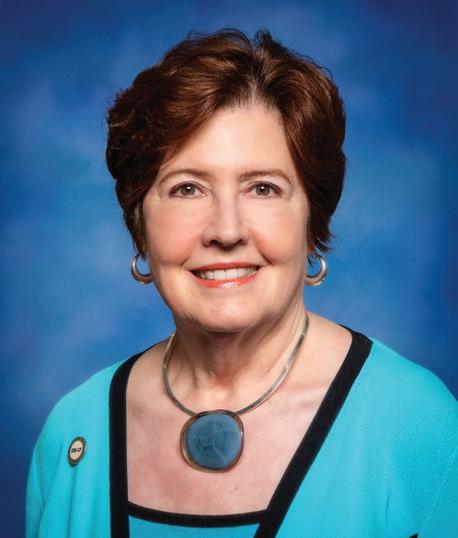




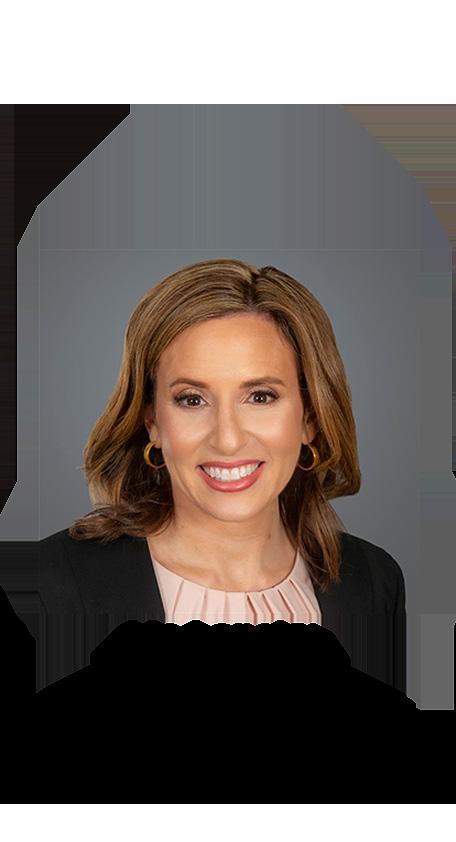


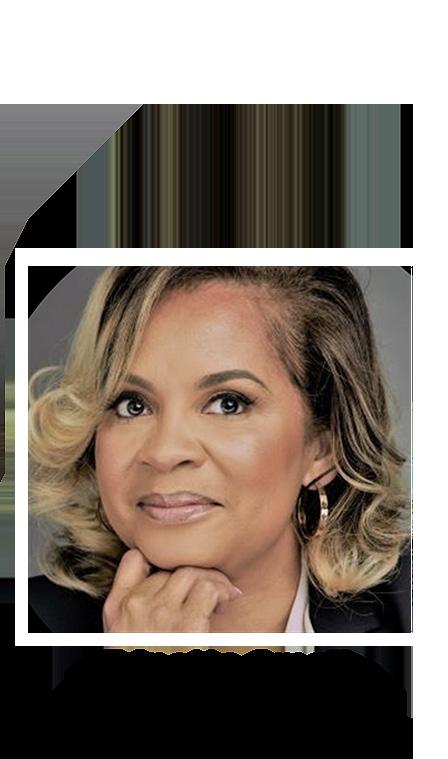



By TIM KECK
Sidney H. isn’t a victim. Yes, she was victimized and almost died, but she has never let that define her.
My name is Tim Keck. I’m a retired police chief and court-certified expert in managing threats. I’ve been helping women stay safe since 1979. I’ve had the honor of getting to know Sidney and speaking on stage with her. She is a strong, successful, and resilient woman who shares a past with some of you, and certainly with some of the women you work with.
Her story is one of tragedy and triumph. She agreed to share it with the world to help other women. Please learn all you can from the following interview.
TIM: When you were younger, what did you think married life would look like for you?
SIDNEY: As a child I always dreamed of the fairy tales I grew up watching on television. But I soon realized that’s not necessarily how the world works.
TIM: Did you have a good model of marriage?
SIDNEY: No. My parents were alcoholics and casual drug users, and my dad could be abusive. When I was 13, he attacked my mom for the last time and got arrested. They both quit using drugs and got counseling to better their lives. But for years mom used to say, “What happens in the house stays in the house.” That belief set me up to fail when I got married.
TIM: Before you married, what kind of men/relationships were you involved in? Were you drawn to a certain type of guy?
SIDNEY: I was drawn to more dominant men, men that were very controlling.
TIM: Once you started dating your future husband, were there any signs that he might have violent tendencies?
SIDNEY: He love-bombed me HARD. He was everything I needed him to be at the time, but it was an act.
TIM: When was the first time you knew for sure there was a problem?
SIDNEY: When I was four months pregnant, he lost his temper and it scared me, but he apologized and promised he would never hurt me.
TIM: Over what period of time did things escalate?
SIDNEY: Very quickly. As we were enroute to the hospital to have my daughter he went from being caring and attentive to verbally abusive. Two days later when we returned home from the hospital was the first time he hit me.
TIM: Did you find the pattern of “abuse, apologize, repeat” or something similar happening?
SIDNEY: Absolutely. I couldn’t understand what I did to deserve this treatment.
TIM: After the first time or two, why did you stay?
SIDNEY: He broke me down psychologically bit by bit until the “me” I had known for 27 years was gone.
TIM: Did any of your friends or coworkers notice or try to help?
SIDNEY: No. He had cut all my friends and family from my life.
TIM: How bad did it get?
SIDNEY: I almost died, the police told the judge that had they not arrived when they did it would have been a murder case and not a domestic abuse case.
TIM: How did you ever break free?
SIDNEY: One night it got so bad that, after an hours-long beating, I was able to call 911.
TIM: What was the hardest part about living with the abuse?
SIDNEY: The fear of him killing me and then hurting my babies.
TIM: What was the hardest part about leaving?
SIDNEY:Because he had broken me so badly, I thought I was incapable of doing anything without him.
TIM: What do you wish your employer or friends or someone had done?
SIDNEY: Just asked if I was ok or told me “Hey we know something is going on. Let us help you.”
TIM: What would you want employers to know about supporting abuse victims?
SIDNEY: Give them grace. Victims are abused physically and mentally. Even when they break free, they are going to go through growing pains and it’s not going to be pretty. Please understand it is because they are learning who they are again, and they have freedom they haven’t had for years. Boundaries will be tested, and emotions will be all over the place.
If you are a leader or HR professional, whatever you do, don’t make it worse. When I was struggling so badly, my boss singled me out and began to pick apart everything I did. She told her boss that while I was good with customers, I wasn’t building relationships with my coworkers. Truth is, I didn’t know how. I was reprimanded and my incentives taken away at a time when I needed them the most. I voiced concerns to HR, but they fell on deaf ears.
Until my manager left the company, my work life felt like another round of abuse.
All my boss or HR had to do was ask me what was going on. If I’d felt like someone cared about me as a person, I would have told them the truth about my situation. But no one asked. All I received was criticism at a time when I needed caring.
TIM: What else do you want people to know about this topic?
SIDNEY: There is hope! I am a living example of that. I’ve overcome what happened to me and never let it define who I am. I am thriving, but I had to put in the work to get there. I have now been promoted several times at my job, just married my best friend, and I’m finally living the fairytale I always dreamt of.

Tim Keck Senior Consultant
Tim@safehavensecuritygroup.com
SafeHavenSecurityGroup.com
844-SAFE-GROUP
SafeHaven Security Group teaches seminars on this topic, and anything related to keeping your people safe from violence. Reach out to us today at www.SafeHavenSecurityGroup.com or call 844-SAFEGROUP to learn more. If you have questions or comments for Sidney or Tim, you may email directly at tim@safehavensecuritygroup.com.

With 18 years of comprehensive experience in Human Resources, Nichole Love has built a career dedicated to cultivating talent, driving organizational growth, and fostering workplace excellence. Nichole joined the MemphisShelby County Airport Authority in 2017, now serving as the Manager of Human Resources in her current role, where the HR Department leads strategic HR initiatives, talent acquisition, and employee development efforts to support the Authority’s mission.
Before this role, Nichole served as the Director of Human Resources for Agape Child & Family Services, where she championed HR operations and contributed to the success of a mission-driven organization. Nichole recently obtained her SHRM-SCP certification. She also holds a Master of Business Administration from the University of Memphis. Additionally, Nichole serves as a panel member on the Airport Cooperative Research Program (ACRP), which is responsible for assessing innovations in service and operations for airports to identify unbiased and reliable research.

Tamika Skinner is a seasoned Human Resources professional with over 20 years of experience. She is currently a Senior Human Resources Generalist with the Memphis-Shelby County Airport Authority where she is responsible for implementing and managing HR programs, practices, and policies.
Tamika is SHRM-CP certified and earned a Master of Business Administration from Webster University.

Core to the relationship between an employer and employee is compensation. In most cases, it’s the primary reason employees join and remain at an organization. While it sounds simple, savvy employers have learned there is far more to employee compensation pay than the paycheck. Financial wellness is what employees really strive for because when their finances are in order, they can achieve their personal and professional goals. Overall stress is reduced, life productivity increases, and relationships improve. Yet, anything related to money seems intimidating, especially given the jargon, fees, and commitment behind traditional financial advisors.
Financial stress seeps into every aspect of an employee’s life. Employees who might already be living paycheck-to-paycheck are thrown for a loop when an elderly parent needs expensive medical treatment, or college payments are looming for a child. There are other trigger events that make people want to get professional financial advice, such as getting a divorce, getting married and merging finances, buying a house, and preparing for retirement. There can also be smaller events like receiving an inheritance, having one’s home flooded in a storm, or when a child needs additional learning resources.
Financial stress – and its corresponding anxiety – can be disruptive in the workplace as well. A 2023 study by PwC shows that “financially stressed employees are twice as likely to look elsewhere.” The same survey uncovered that 73 percent of financially stressed employees say they would be attracted to another employer that cares more about their financial wellbeing. A recent study from John Hancock shows that financial stress among employees can cost you more than $2,400 per employee in absenteeism and loss of productivity. When stress is alleviated, it can help employees become less distracted and more engaged. Bringing financial wellness resources into the employee benefits aspect of compensation makes them top-of-mind and easily accessible.
With the reality of stress diminished, there are other hurdles to manage. Employees want to know they’ll be okay to plan ahead financially without fear of being sold a bunch of products or forced to have someone manage their investments for them. Despite the current emphasis on chatbots and AI, comfortably asking fundamental questions like how I qualify for a car loan is best achieved when there’s an empathetic human involved in the process. And knowing you have a block of hours that you can use for these types of financial inquiries as an employee benefit – without an obligation to invest – can change lives.
By AMY SCHABACKER DUFRANE
Going back to the PwC study, 60% of full-time employees are stressed about their finances. That’s even higher than the number who were stressed about finances during the height of the pandemic. Even among employees earning $100,000 or more per year, nearly half (47%) say they are stressed about their finances. This same study revealed that financial stress has had a negative impact on sleep (56%); mental health (55%); self-esteem (50%); physical health (44%); and relationships at home (40%). Without a financial wellness offering in the suite of employee benefits, it’s like taking one step forward and four back, eradicating the positive contributions of other benefits being offered.
Here at HRCI, we’ve leaned into providing financial wellness to our employees through a provider named FearlessFinance There is no better endorsement of its effectiveness than the words of one of the program’s participants. She commented on the compassionate, non-judgmental way they helped guide her when tackling a large, unexpected expense alleviating her money management fears. By developing a clear action plan, the immediate issue was resolved, and confidence was created, empowering the employee to take control of her financial future. Best of all, the value of this employee benefit was readily recognizable, and distractions diminished.
With each new year, there’s a chance to press reset, and finances loom large on that list of resolutions. Helping employees bring their whole selves to work by rewarding them with new skills, new levels of support, and added resources improves retention and engagement. Healthy lifestyle benefits create winning teams, and that’s an HR gold standard.

Amy Schabacker Dufrane, Ed.D., SPHR, CAE, is CEO of HRCI® — HR Certification Institute, and is the founder and CEO of HRSI — HR Standards Institute, where she is responsible for driving and disrupting the conversations about building high-performing, strategic HR teams. An engaging thought leader at the intersection of talent strategy and continuous learning, Dr. Dufrane is an awardwinning leader and celebrated keynote speaker on the human side of successful business strategy in the 21st century.
By HRCI ® + HRSI™ CEO Amy Dufrane, Ed.D., SPHR, CAE, and Clarissa Peterson, GPHR, SPHR, LPEC
PURCHASE YOUR COPY TODAY: hrci.org/alchemizinghrbook

The official guide to the HRCI® Professional Development Model—a comprehensive framework designed to empower HR practitioners at any level—gathers insights from HRCI’s popular “Alchemizing HR” webinar series.

Praise for Alchemizing HR: Your Formula for the New Era eBook
“Without question, environmental megatrends have increased the materiality of human resources. With their unique high-level perspective, Amy and Clarissa propose five professional domains and practices for HR professionals to turn their knowledge into enterprise value. Their playbook for HR’s future—grounded in ideas, examples, and actions—enables any HR professional to rise to today’s opportunity.”
- Dave Ulrich, Rensis Likert Professor, Ross School of Business, University of Michigan Partner, the RBL Group
HRCI Recertification Credit
Three (3) business credits toward recertification will be awarded to HRCI certificants who read “Alchemizing HR: Your Formula for the New Era” and add it to their online application.

By TIM K. GARRETT & HUNTER YOCHES
The National Labor Relations Board (NLRB or Board) recently issued two rulings that caused a seismic shift in what is permissible employer conduct during a union organizational campaign. While there is uncertainty about the longevity of these rulings with an incoming change in administration, employers are required to comply with the new precedents for the time being.
First, on November 8, the Board ruled in Siren Retail Corp. d/b/a Starbucks, that employers likely violate the law by informing employees that having a union will result in the loss of a direct relationship between employees and management.
The NLRB ruled that such statements are unlawfully threatening, and the ruling reverses a 40-year-old precedent that had allowed employers to inform workers about such potential consequences of unionization. The Board adopted a new standard for evaluating such comments. Previously, employers could make explanatory statements to employees about the likely impacts of unionization on the employer-employee relationship in the workplace.
Now, the NLRB requires that employers’ statements on the impact of unionization be “carefully phrased on the basis of objective fact” about “demonstrably probable” consequences that are beyond the employer’s control. If the statements predict negative consequences from actions within the employer’s control or predict negative consequences that are not grounded in fact, those statements could be deemed “a threat of retaliation based on misrepresentation and coercion.” Going forward, employers will need to be more deliberate and calculated in their statements with respect to unionization efforts.
Reversal of 80-Year Precedent Related to Captive Audience Meetings
Second, on November 13, the Board ruled in Amazon.com Services LLC that “captive audience” meetings are unlawful. Historically, based on 80-year-old precedent, employers could hold informational meetings, during which they shared the employer’s views on the downsides of unionization; such meetings were held on company time, for which employees were paid but for which meetings, attendance was mandatory (hence the phrase “captive audience” meetings). Previously, as long as the mandatory meetings were non-coercive and the employer did not convey unlawful threats or make unlawful promises, the meetings were permissible.
Now, however, the NLRB has ruled that compelling employees to attend such meetings, with the inherent threat of discipline if they do not attend, constitutes unlawful coercion. While meetings regarding unionization and third-party representation are still permitted, employers must now comply with new, strict guidelines that the Board considers a safe harbor.
Employers must ensure that attendance at such meetings is truly voluntary and make clear that there will be no discipline or other negative workplace consequences for an employee’s decision not to attend the meeting or to leave the meeting after it has started. Additionally, employers must ensure that employees are provided “reasonable advance notice” regarding the purpose of the meeting and assure employees that attendance at the meetings will not be tracked.
Of course, in light of President Trump’s recent election, these shifts in NLRB precedent and subsequent enforcement by the NLRB General Counsel may be short-lived. It is highly likely that, upon inauguration, President Trump will appoint a new General Counsel who will likely seek to overturn these decisions. Likewise, a Trumpappointed NLRB will be expected to overturn such precedent soon
after the NLRB has a Republican majority, which is anticipated to be in August 2026. However, in the meantime, employers would be wise to comply with these new rulings.
In addition, in light of the Senate’s recent failure to confirm the re-appointment of current NLRB Chairman Lauren McFerran, a Democrat, whose term expired December 16, the NLRB will have two open seats when President-elect Trump takes office, allowing President-elect Trump to nominate two persons to the NLRB, both of whom can be and (most likely) will be Republicans. Upon confirmation of those nominees, the NLRB will shift to a Republican majority. It is likely that upon the Republicans becoming the majority, the NLRB will begin reversing various pro-union decisions the Biden NLRB handed down during the last four years, including those mentioned in this article, and especially in those decisions in which the Republican members issued lengthy and robust dissents.
It is not clear at this time whom President-elect Trump will appoint, how long the confirmation process will take, or what cases the new Board NLRB will focus on in the short term. However, a flurry of action is expected. In the meantime, employers would be wise to comply with these new rulings.
Reprinted from Bass, Berry & Sims HR Law Talk Blog
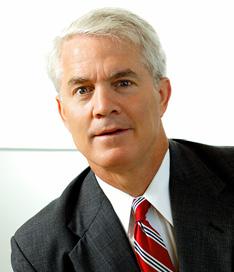
Tim K. Garrett, Member tgarrett@bassberry.com
Tim Garrett helps employers solve complex issues related to all aspects of labor and employment law, providing in depth counseling and developing creative solutions to underlying business issues. He is an experienced trial lawyer, defending employers of all sizes in employment litigation claims across the country. His work has ranged from defending a major university during a significant wage and hour collective action involving thousands of employees to the successful defense of a major healthcare provider in a gender discrimination / retaliation case. In addition, Tim has served as nationwide labor and employment counsel for the largest nonprofit dialysis company in the U.S.
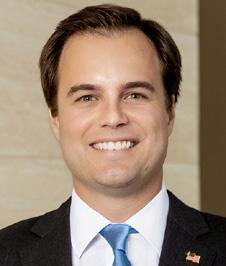
Hunter Yoches, Associate hunter.yoches@bassberry.com
Hunter Yoches represents management in all aspects of labor and employment law and related litigation. He regularly defends employers against various claims and counsels clients on a wide range of day-to-day employment matters. Hunter has experience litigating cases and counseling clients regarding federal and state employment laws, including collective and class action litigation, contract disputes, and compliance issues. He advises clients related to wage and hour laws (such as the Fair Labor Standards Act), discrimination laws (such as the Americans with Disabilities Act, Age Discrimination in Employment Act, Family and Medical Leave Act, Title VII of the Civil Rights Act, and others), unfair labor practices (such as the National Labor Relations Act), and more, helping employers remain compliant with the constantly changing laws and regulations that impact the workplace.


Employee Benefits (ERISA) Law; Litigation – ERISA
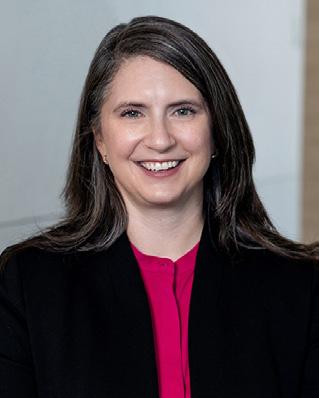
Susan K.
Employee Benefits (ERISA) Law
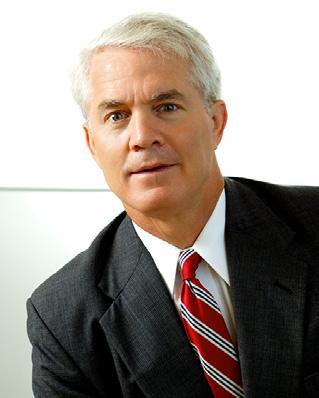

Employment Law – Management; Health Care Law
Employment Law – Management; Labor Law – Management; Litigation – Labor and Employment; Best Lawyers® 2025 Labor Law – Management “Lawyer of the Year” in Nashville
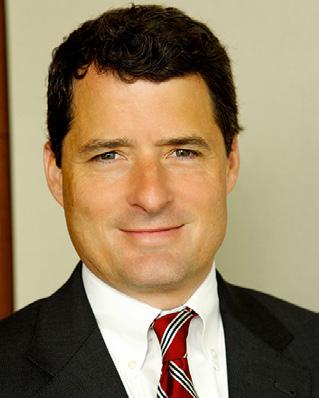
Davidson French, Member Employment Law – Management; Litigation – Labor and Employment

Robert W. Horton, Member
Employment Law – Management; Labor Law – Management; Litigation –Labor and Employment

Employee Benefits (ERISA)

Mary Leigh Pirtle, Member Employment Law – Management; Litigation – Labor and Employment

Associate Labor and Employment Law –Management
AI-DRIVEN HR IS HERE TO TRANSFORM THE WAY YOU WORK.

Engage in an interactive learning experience to confidently leverage AI in your organization with SHRM’s AI + HI Specialty Credential.
Your learning journey consists of:
Learn the language of AI by exploring core concepts and building your foundational literacy.
LAB 2: ENHANCE YOUR CURIOSITY
Develop a vision for an AI-enhanced workforce by analyzing case studies and identifying AI-driven solutions.
LAB 3: EXPERIMENT CONFIDENTLY
Apply your new skills under the guidance of an AI expert and build strategies to empower AI adoption in your organization.
Evaluate your organization, create an AI implementation road map, and develop a clear adoption plan.
Leverage AI. Transform HR. Drive Success. Visit shrm.org/LearnAiHi
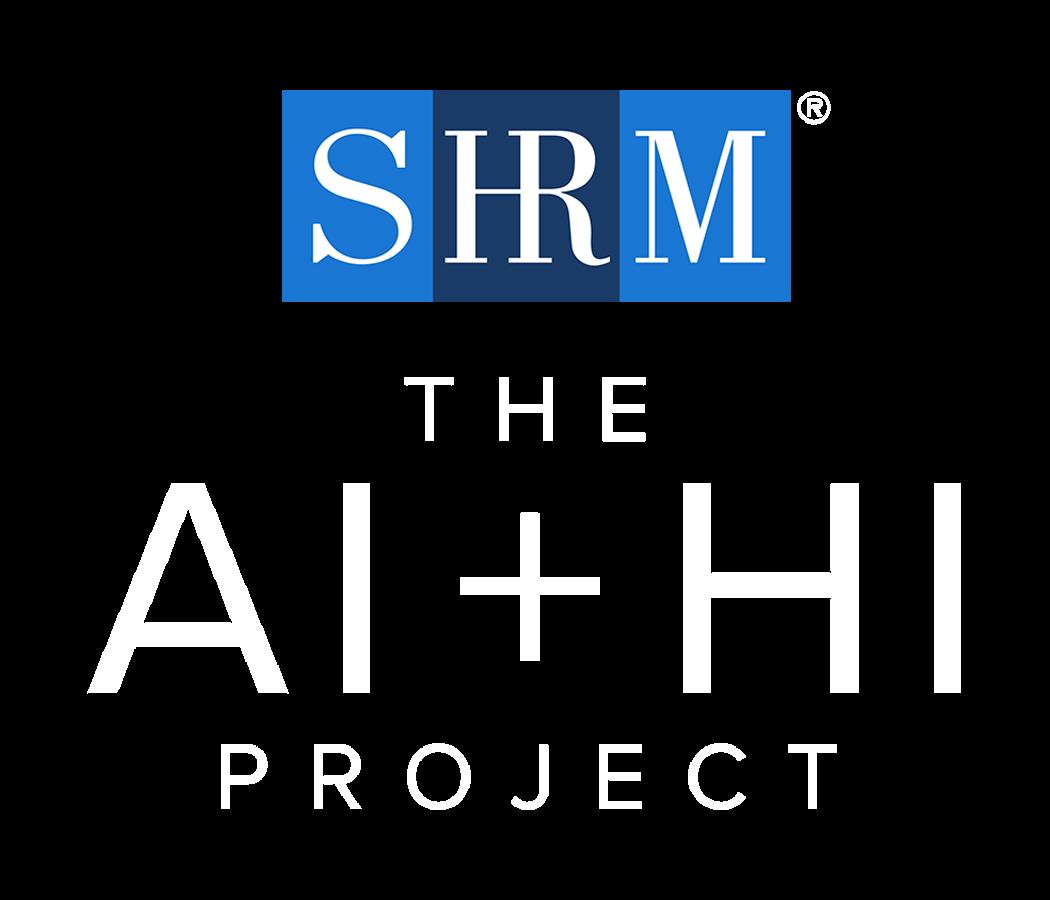
SAN FRANCISCO, CA • APRIL 9 - 10, 2025

The AI+HI Project is designed to provide an intimate and interactive experience focused on innovation and forwardthinking collaborations between Artificial Intelligence and Human Ingenuity in the workplace.
The program will deliver real-world examples of AI integration wins and failures, educate on how businesses can develop intentional and sustainable strategies for applying AI technology, and delve into the political and ethical discourse surrounding workplace AI regulation.
Our sessions will also provide you with ideas to help your workforce:
overcome concerns about AI in general,
adapt to a new business model where AI is a foundational part of daily processes, and
learn how to use AI as a tool that creates efficiencies, expands creative thinking and builds better business opportunities at each level of your organization.
To gain a comprehensive understanding of how our sessions will address the present and future states of AI in the workplace, explore the Program Highlights and familiarize yourself with the six distinct AI Topic Areas.
Before AI can rewire your organization, you must learn how to implement it properly. Learn to determine use cases for AI, deploy tools effectively, navigate legal and ethical challenges, and integrate AI into the human intelligence already present in your organization.
You’ve heard how AI can optimize processes throughout your organization. But it can also help executives enhance their leadership skills and make better decisions. Learn how to create strategic alignment between your business goals and AI policies to unlock the potential of predictive AI.
The implications of AI extend far beyond the workplace. Education, media, politics and more will all be forever altered by advancements in AI technology. Discover the societal shifts transforming the business landscape in the coming years and learn how your organization can best respond.

Online classes begin February 19, 2025 and will meet twice per week for 8 weeks on Monday and Wednesday evenings from 6:00 PM to 7:00 PM.
• Six Study Guides • Online practice exams for each Study Guide • 100s of Flashcards
• HRCP materials that are among the most effective study guides available and are easy to read and understand
The total cost of the HRCI PHR | SPHR Certification Prep Class is $900 plus shipping ($25.00).
You may pay by PayPal, Credit Card, or Check.
If you fail the exam, you may retake the class as long as you – Attend 80% of the scheduled online classes – Score 80% on all HRCP practice quizzes during the program
Deadline to register is February 15, 2025
Contact cynthia@hrprosmagazine.com OR visit our website at www.hrprofessionalsmagazine.com
About the instructor:
Cynthia Y. Thompson is Principal and Founder of The Thompson HR Firm, a human resources consulting company in Memphis. She is a senior human resources executive with more than twenty years of human resources experience concentrated in publicly traded companies. She is the Editor | Publisher of HR Professionals Magazine, an HR publication distributed to HR professionals in Alabama, Arkansas, Florida, Georgia, Kentucky, Louisiana, Mississippi, North Carolina, South Carolina, Tennessee, and Texas.
Cynthia has an MBA and is certified as a Senior Professional in Human Resources (SPHR) by the Human Resource Certification Institute and is also certified as a Senior Certified Professional by the Society for Human Resource Management. She is a faculty member of Christian Brothers University. Cynthia was appointed to serve on the Tennessee DOHR Board of Appeals by Gov. Bill Haslam in 2014.

By GEOFFREY A. LINDLEY and NAKOTA G. WOOD

[A] reasonable accommodation is one that will enable the employee to perform the essential functions of the job either presently or in the near future.
Rogers v. Unified Gov’t of Wyandotte County/Kansas City, Case No. 23-2143-JAR, 2024 U.S. Dist. LEXIS 189119, at *33 (D. Kan. Oct. 17, 2024) (citations omitted).
The Americans with Disability Act (“ADA”) prohibits discrimination against qualified individuals because of their disability with regard to employment applications, terminations, and the terms and conditions of employment. 42 U.S.C. § 12112(a). Absent undue hardship on the part of an employer, refusal to make reasonable accommodations to employees with disabilities is one type of discrimination that violates the ADA. 42 U.S.C. § 12112(b)(5)(A). Accommodations are reasonable when they enable employees to perform the essential functions of their job currently or in the near future. Aubrey v. Koppes, 975 F.3d 995, 1006-07 (10th Cir. 2020). Nevertheless, under the ADA, an employer is not required to suspend or remove the essential functions of a job. The determination as to what constitutes a reasonable accommodation is fact specific and should also be made on a case-by-case basis. Bielski v. Green, 674 F. Supp. 2d 414,424 (W.D. N.Y. 2009) (citations omitted).
With the above in mind, the District of Kansas recently addressed an employee’s claim that her employer violated the ADA by not granting her request for indefinite remote work.
Jill Ann Rogers (“Rogers”) began working for the Kansas City Board of Public Utilities (“BPU”) in 2003, and in 2013, she was promoted to Assistant Purchasing Agent. Rogers, 2024 U.S. Dist. LEXIS 189119, at *3. In 2016, Rogers was diagnosed with multiple sclerosis (“MS”) which caused her to have mobility issues. Id.
Because of these issues, Rogers requested that BPU install automatic and push doors to the main entrance and bathroom and provide her with reserved parking near the building’s entrance. Id. BPU complied with all of these requests, but the requested doors would malfunction occasionally, and, at Rogers’ insistence, her reserved parking spot was moved five times for various reasons. Id. at *3-4. Although Rogers never requested an electric scooter, BPU provided her with one to use at work and designated another employee to assist in physically transferring her between her car and the scooter. Id. at *4.
When the Purchasing Director retired in 2017, Rogers, in addition to being the Assistant Purchasing Agent, was named the acting director and remained in these positions for four years. Id. at *5. When BPU began actively searching for a Director of Purchasing and Supply Chain in November of 2020 through an outside agency, Rogers applied for the position. Id. at *6. BPU required applicants to have “a bachelor’s degree in management, procurement, finance, or a business-related degree; a master’s degree or MBA would be considered a ‘plus.’” Id. The job announcement also listed several functional competencies, including: “(1) a minimum of ten years of experience in purchasing and supply chain; (2) preferred experience with governmental or quasi-governmental entities; (3) experience with bidding process for major construction projects; (4) experience with requests for proposals and master service agreements; and ([5]) excellent negotiation skills.” Id.
Ultimately, BPU hired an external candidate, Becky Aldinger (“Aldinger”) because of her relevant work experience. Id. at *7. Aldinger had a long and extensive career in supply chain and procurement with other utilities and electricity companies and had managed all procurement-related activities for contracts for power delivery and power generation projects. Id. at *7-8. Conversely, Rogers’ experience met only the minimum requirements for the job. Id. at *8.
While BPU had no policies prohibiting remote work, prior to the COVID-19 pandemic (the “Pandemic”), BPU had not allowed its employees to work remotely. Id. at *9. However, during the Pandemic, BPU allowed some employees to work from home for three weeks. Id. at *10. At the end of those three weeks, all employees were required to return to work in-person, unless they were required to quarantine. Then they were permitted to work remotely for up to a week. Id.
Before the Pandemic, Rogers started to receive chemotherapy treatments for her MS every six months. Id. She would receive her treatments on Fridays and be off the following work week on sick leave. Id. Because Rogers had a compromised immune system, during 2020 and as a result of the Pandemic, BPU allowed Rogers to work remotely for three to four weeks around the time of her chemotherapy treatments as an accommodation. Id.
In February of 2021, Rogers requested to work from home before and after her chemotherapy treatments, and BPU permitted her to do so. Id. at *10-11. During this time, Rogers learned that BPU hired Aldinger for the Director of Purchasing and Supply Chain position. Id. at *11. Rogers was then asked by BPU when she would be back in the office so that Rogers could assist in training and onboarding Aldinger. Id. In March of 2021, Rogers informed BPU that her doctor would not provide her with a note to return to work and requested to work from home for an indefinite time period. Id. at *12-13. Even though this request was denied by Rogers’ supervisor, BPU offered Rogers twelve weeks of FMLA leave, long-term disability, and to leave her job open to her for two years. Id. at *13.
Rogers eventually exhausted her FMLA leave and went on long-term disability. Id. She then filed a charge with the Kansas Human Rights Commission and U.S. Equal Employment Opportunity Commission (“EEOC”), alleging that BPU failed to accommodate her by refusing her indefinite remote work request. Id. at *14-17. Rogers subsequently filed a federal lawsuit, alleging, among other things, that BPU failed to accommodate her in violation of the ADA by refusing her request to work from home indefinitely. Id. at *21.
Rogers claimed that BPU illegally refused to accommodate her “by failing to allow her to work remotely.” Id. at *26. To establish a prima facie case for a failure-toaccommodate claim, an employee must prove: “(1) she is disabled; (2) she was otherwise qualified; (3) she requested a plausibly reasonable accommodation; and (4) [her employer] refused to accommodate her disability.” Id. at *30 (citations omitted). The primary issue regarding her remote work request was whether it was plausibly reasonable both factually and legally.
Indefinite Remote Work
In analyzing Rogers’ claim, the Court considered Tenth Circuit precedent that “prescribes a burden-shifting formula that first requires a plaintiff to show that the requested accommodation is reasonable on its face; it is not facially reasonable if the accommodation would not enable the employee to perform the essential function of the job.” Id. at *33-34 (citing Dansie v. Union Pac. R.R., 42 F.4th 1184, 1194 (10th Cir. 2022)) (emphasis added). If a plaintiff is able to prove this, the burden then shifts to the employer to show that the accommodation would cause undue hardship. Id. at *34. If an employer is able to establish undue hardship, then the plaintiff must “produce evidence of her individual capabilities and suggestions for a possible accommodation that rebuts [the employer’s] evidence.” Id.
BPU was able to establish that all BPU positions, including Rogers’ position, required physical presence in the workplace because “BPU provides critical infrastructure and services to the population of Wyandotte County, Kansas[,] [including] suppli[ng] water and electricity to the county and the metropolis of Kansas City, Kansas.” Id. at *35. The Court reasoned that courts “generally defer to the employer’s judgment as
to what functions are essential” and that “physical presence in the workplace is an essential function of most jobs.” Id. (citations omitted).
Rogers argued that physical presence in the office was not an essential function of her job because she had worked remotely in the past. Id. at *38. The Court held that this argument failed for two reasons. First, “an employee cannot create a genuine, material issue of fact based solely on her opinion of what the essential functions of the job are.” Id. The Court further explained that the fact that Rogers’ job descriptions did not expressly state that physical presence was required was not dispositive of whether physical presence was in fact an essential job function. Id. Second, because Rogers requested “to work remotely for an indefinite period of time, she [could] not show that [was] a facially reasonable request, given that a reasonable accommodation is one that will enable the employee to perform the essential functions of the job either presently or in the near future.” Id. (citations omitted) (emphasis added).
The Court noted that, each time Rogers previously worked from home, she did so for a definite and limited period of time. Id. at *39. However, the indefinite period requested by Rogers and at issue in this case provided BPU with no duration, expectation, or explanation as to when Rogers might return to the office. Id. As a result, the Court held that Rogers failed to show that her indefinite remote work request was a facially reasonable accommodation. Id. at *40. Therefore, the Court dismissed Rogers’ claim that BPU discriminated against her under the ADA by failing to grant her request to work from home indefinitely.
This case demonstrates the importance of working with employees with medical conditions to see if there is a reasonable accommodation that will allow them to perform the essential functions of their jobs. For when a legal claim comes, it helps to be able to demonstrate to the court how reasonable the employer has been it its communication with and assistance to an employee. Such was the case here, where the employer bent over backwards to assist the employee
in performing the essential functions of her job. Therefore, when it came time for the employer to draw the line at indefinite remote work, it was a harder sell by the employee to prove that the employer had violated the ADA.
Regarding written policies and job descriptions, it would have been best if BPU had in writing that in-person work was essential to Rogers’ position. Nevertheless, actual practice is as important, and in most cases more important, than what is in writing. Therefore, it helped the employer to be able to show that remote work had only been allowed in rare circumstances in the past. Nevertheless, employers should still ensure that they have written policies and job descriptions that match what is required and what actually takes place in the workplace.
Lastly, employers should handle requests for indefinite accommodations carefully. Courts have held that indefinite leave is never a reasonable accommodation. However, that is not exactly what the court held here with regard to remote work. The court determined that indefinite remote work was not a reasonable accommodation in this case because in-office presence was an essential function of the job at issue. And if Rogers had to be out of the office indefinitely, whether attempting to work or otherwise, she could not perform the essential functions of her job presently or in the near future. However, some indefinite accommodations that will allow an employee to perform their essential job functions may be reasonable, such as a permanent parking spot near the work location.

Geoffrey A. Lindley, Attorney glindley@raineykizer.com
Rainey Kizer Reviere & Bell PLC www.raineykizer.com
Nakota Wood, Associate nwood@raineykizer.com
Rainey Kizer Reviere & Bell PLC www.raineykizer.com





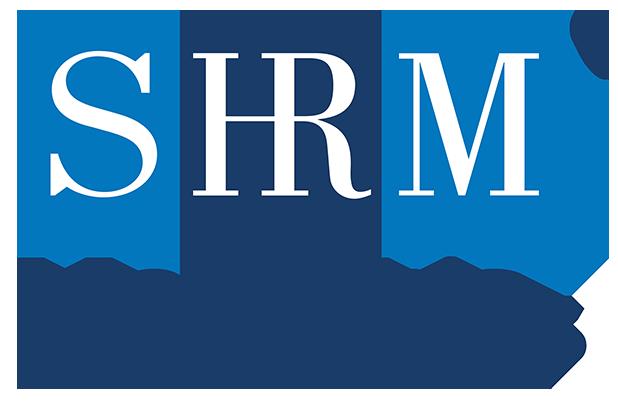











WASHINGTON--The U.S. Equal Employment Opportunity Commission (EEOC) named Lisa Morelli today as its new director for Field Management Programs in the Office of Field Programs.
Morelli served as an EEOC attorney for more than 28 years. In her new position, she will be responsible for ensuring the effective and efficient operations of the agency’s 53 field offices by providing operational oversight and monitoring of program implementation and coordination of administrative enforcement activities.
“I am excited and honored to start this new position in the Office of Field Programs,” said Morelli. “As the public’s demand for EEOC’s services continues to increase, resulting in heavier workloads for agency staff, my goal is to provide support to our people and mission-critical operations. I hope to help manage the demands on agency staff while ensuring excellent and efficient service to the public.”
Most recently, Morelli was the assistant general counsel in litigation management services in the Office of General Counsel. Previously, she served as a senior trial attorney in Seattle, and as the senior attorney advisor to the deputy general counsel.
“Lisa Morelli brings a wealth of experience and skills to this crucial role,” said EEOC Chair Charlotte A. Burrows. “The staff of our 53 field offices provide the public face of the agency to communities around the country. Lisa’s experience and expertise will provide excellent support for their critical work to prevent and remedy discrimination in our nation’s workplaces. I’m delighted to work with her in this new role.”
Throughout her career, Morelli provided advice to over 300 field attorneys and staff, litigated a variety of cases under federal employment statutes, and managed the programmatic, operational, and administrative functions of headquarters and field legal units for the Office of General Counsel.
Morelli earned a bachelor of science in business administration from Villanova University, followed by a juris doctor from the Columbus School of Law at Catholic University of America.
The EEOC advances opportunity in the workplace by enforcing federal laws prohibiting employment discrimination. More information is available at www.eeoc.gov. Stay connected with the latest EEOC news by subscribing to our email updates

Linkage, Inc., a SHRM Company,
as Chief Executive Officer
ALEXANDRIA, Va – Effective April 1, Linkage, Inc., a SHRM company, announced the appointment of Tamla Oates-Forney as its Chief Executive Officer. Most recently, Tamla served as EVP, Chief Human Resources Officer (CHRO) for USAA, where as a member of the Executive Council she led USAA’s team of more than 500 HR professionals spanning talent development, talent acquisition, total rewards, HR risks and controls, and employee services for 37,000 teammates.
“As part of the SHRM family, the Linkage product line plays a pivotal role in changing the face of leadership at all organizational levels. Tamla is ideally suited to lead our work to continue - and expand Linkage’s 35-year heritage of exceptional leadership development,” shared Nick Schacht, Chief Commercial Officer, SHRM.
Prior to joining USAA, Tamla served as Senior Vice President and Chief People Officer at WM (previously Waste Management). She spent the majority of her career at General Electric, where she held multiple leadership roles, including HR Leader for GE Africa, Chief Diversity Officer for GE Appliances and Lighting, and Vice President of HR for GE Energy Connections.
“I am profoundly honored to lead Linkage,” shared Oates-Forney. “Together, SHRM and Linkage ensure that HR professionals, business executives, and policymakers are better positioned to excel in the workplace with exclusive access to more data insights, business tools, and top-notch leadership development programming. Retiring as a 2X CHRO, becoming the CEO of Linkage is not only an honor, but a natural evolution of where my purpose, passion, and professional experience align. I stand ready to advance women and accelerate inclusion in leaders and organizations.”
Tamla is a graduate of the University of North Carolina at Chapel Hill where she earned her Bachelor of Science degree in Business Administration. A renowned expert in her field, she has received multiple honors including being featured in The New York Times, Fast Company, The Network Journal’s 25 Influential Black Women in Business and Savoy’s 2020 Most Influential Black Executives in Corporate America. She is also a member of the Executive Leadership Council (ELC), a network of black CEOs and business leaders who support the development of diverse talent and the promotion of social justice.
Linkage is a global leadership development firm committed to advancing women and accelerating inclusion in leaders and organizations, trusted by more than 250 clients across industries. For more than 30 years, Linkage has been changing the face of leadership by impacting organizational effectiveness and equity. Through their work with more than one million leaders, Linkage continues to evolve their unique datasets, insights, and innovative products to create comprehensive solutions—empowering top organizations to solve their most pressing talent challenges.
SHRM is a member-driven catalyst for creating better workplaces where people and businesses thrive together. As the trusted authority on all things work, SHRM is the foremost expert, researcher, advocate, and thought leader on issues and innovations impacting today’s evolving workplaces. With nearly 340,000 members in 180 countries, SHRM touches the lives of more than 362 million workers and their families globally. Discover more at SHRM.org.
7 IN 10 U.S. WORKERS REPORTED DISRUPTIVE
Healthcare reforms, labor market shifts and new technologies are reshaping the world of work. Many HR professionals are struggling to keep pace with change. Discover proven solutions and innovative approaches to lead successful organizational change in San Diego, June 29 – July 2 at the SHRM Annual Conference & Expo.
